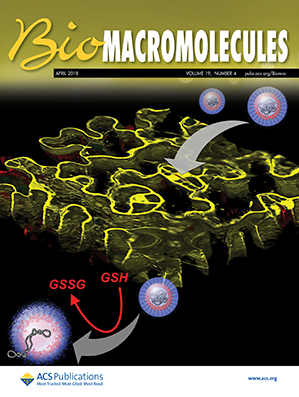Adverse outcomes and mortality in individuals with eating disorder-related electrolyte abnormalities in Ontario, Canada: a population-based cohort study.
IF 5.5
2区 化学
Q1 BIOCHEMISTRY & MOLECULAR BIOLOGY
引用次数: 0
Abstract
BACKGROUND Individuals with eating disorders are at a higher risk of electrolyte abnormalities than the general population. We conducted the first representative cohort study assessing whether electrolyte abnormalities in people with eating disorders were associated with mortality and physical health outcomes. METHODS This was a retrospective population-based cohort study in Ontario including people aged 13 years or older with an eating disorder and an outpatient electrolyte measure within 1 year (between Jan 1, 2008 and June 30, 2019). An electrolyte abnormality was any of hypokalaemia, hyperkalaemia, hyponatraemia, hypernatraemia, hypomagnesaemia, hypophosphataemia, metabolic acidosis, or metabolic alkalosis. The primary outcome was all-cause mortality. Secondary outcomes were hospitalisation, a cardiac event, infection, acute or chronic kidney disease, fracture, and bowel obstruction. In additional analyses, we examined a younger cohort (<25 years old) and individuals with no previously diagnosed secondary outcome. We involved people with related lived or family experience in the study. FINDINGS 6163 patients with an eating disorder and an electrolyte measure within 1 year since diagnosis (mean age 26·8 years [SD 17·5]; 5456 [88·5%] female, 707 [11·5%] male; median follow-up 6·4 years [IQR 4-9]) were included. Ethnicity data were not available. The most common electrolyte abnormalities were hypokalaemia (994/1987 [50·0%]), hyponatraemia (752/1987 [37·8%]), and hypernatraemia (420/1987 [21·1%]). Overall, mortality occurred in 311/1987 (15·7%) of those with an electrolyte abnormality versus 234/4176 (5·6%) in those without (absolute risk difference 10·1%; adjusted hazard ratio 1·23 [95% CI 1·03-1·48]). Hospitalisation (1202/1987 [60·5%] vs 1979/4176 [47·4%]; 1·35 [1·25-1·46]), acute kidney injury (206/1987 [10·4%] vs 124/4176 [3%]; 1·91 [1·50-2·43]), chronic kidney disease (245/1987 [12·3%] vs 181/4176 [4·3%]; 1·44 [1·17-1·77]), bone fracture (140/1987 [7·0%] vs 167/4176 [4·0%]; 1·40 [1·10-1·78]), and bowel obstruction (72/1987 [3·6%] vs 57/4176 [1·4%]; 1·62 [1·12-2·35]) were associated with an electrolyte abnormality, but not infection or a cardiovascular event. Findings were consistent in young individuals (<25 years old) and those without secondary outcomes at baseline, by eating disorder type, and by sex. INTERPRETATION Electrolyte abnormalities are associated with death and poor physical health outcomes, supporting the importance of monitoring and possible interventions to prevent adverse outcomes. Findings also call for a refinement of the definition of severity of eating disorder and replication of these findings in other jurisdictions. FUNDING None.加拿大安大略省与饮食失调有关的电解质异常患者的不良后果和死亡率:一项基于人群的队列研究。
背景饮食失调症患者发生电解质异常的风险高于普通人群。我们开展了第一项具有代表性的队列研究,评估饮食失调患者的电解质异常是否与死亡率和身体健康状况相关。方法这是一项基于安大略省人群的回顾性队列研究,研究对象包括年龄在13岁或13岁以上、患有饮食失调且在1年内(2008年1月1日至2019年6月30日期间)接受过门诊电解质测量的人群。电解质异常是指低钾血症、高钾血症、低钠血症、高钠血症、低镁血症、低磷血症、代谢性酸中毒或代谢性碱中毒中的任何一种。主要结果是全因死亡率。次要结果是住院、心脏事件、感染、急性或慢性肾病、骨折和肠梗阻。在额外的分析中,我们研究了较年轻的队列(小于 25 岁)和之前未诊断出次要结果的个体。我们让有相关生活或家庭经历的人参与了这项研究。研究结果:共纳入了 6163 名饮食失调患者,他们在确诊后 1 年内接受了电解质测量(平均年龄 26-8 岁 [SD 17-5];女性 5456 人 [88-5%],男性 707 人 [11-5%];随访时间中位数为 6-4 年 [IQR 4-9])。种族数据不详。最常见的电解质异常是低钾血症(994/1987 [50-0%])、低钠血症(752/1987 [37-8%])和高钠血症(420/1987 [21-1%])。总体而言,电解质异常者中有 311/1987 例(15-7%)死亡,而无电解质异常者中有 234/4176 例(5-6%)死亡(绝对风险差异为 10-1%;调整后危险比为 1-23 [95% CI 1-03-1-48])。住院(1202/1987 [60-5%] vs 1979/4176 [47-4%];1-35 [1-25-1-46])、急性肾损伤(206/1987 [10-4%] vs 124/4176 [3%];1-91 [1-50-2-43])、慢性肾病(245/1987 [12-3%] vs 181/4176 [4-3%];1-44 [1-17-1-77])、骨折(140/1987 [7-0%] vs 167/4176 [4-0%];1-40 [1-10-1-78])和肠梗阻(72/1987 [3-6%] vs 57/4176 [1-4%];1-62 [1-12-2-35])与电解质异常有关,但与感染或心血管事件无关。电解质异常与死亡和不良身体健康状况有关,这说明了监测和可能的干预措施对预防不良后果的重要性。研究结果还要求完善饮食失调症严重程度的定义,并在其他地区复制这些发现。
本文章由计算机程序翻译,如有差异,请以英文原文为准。
求助全文
约1分钟内获得全文
求助全文
来源期刊

Biomacromolecules
化学-高分子科学
CiteScore
10.60
自引率
4.80%
发文量
417
审稿时长
1.6 months
期刊介绍:
Biomacromolecules is a leading forum for the dissemination of cutting-edge research at the interface of polymer science and biology. Submissions to Biomacromolecules should contain strong elements of innovation in terms of macromolecular design, synthesis and characterization, or in the application of polymer materials to biology and medicine.
Topics covered by Biomacromolecules include, but are not exclusively limited to: sustainable polymers, polymers based on natural and renewable resources, degradable polymers, polymer conjugates, polymeric drugs, polymers in biocatalysis, biomacromolecular assembly, biomimetic polymers, polymer-biomineral hybrids, biomimetic-polymer processing, polymer recycling, bioactive polymer surfaces, original polymer design for biomedical applications such as immunotherapy, drug delivery, gene delivery, antimicrobial applications, diagnostic imaging and biosensing, polymers in tissue engineering and regenerative medicine, polymeric scaffolds and hydrogels for cell culture and delivery.
 求助内容:
求助内容: 应助结果提醒方式:
应助结果提醒方式:


